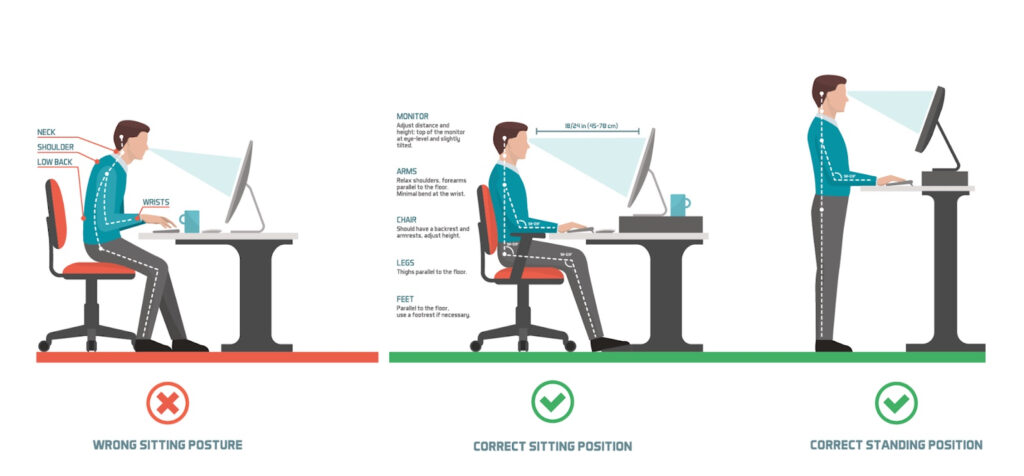Chiro in Tampines , East Singapore : Well-Balanced Family Chiropractic
Chiro in Tampines , East Singapore : Well-Balanced Family Chiropractic
Check Out Our 5 Stars Reviews
New Patient Promo for ONLY $80! Click HERE to BOOK NOW!
New Patient Promo for ONLY $80! Click HERE to BOOK NOW!
In today’s fast-paced work environment, it is essential to prioritise proper work ergonomics to enhance comfort, prevent injuries, and promote productivity.
Work ergonomics refers to the science of designing and arranging workspaces and tasks to fit the individual’s needs and capabilities. It involves optimising the interaction between workers and their work environment to reduce physical strain and enhance performance. By aligning the body with the tasks and workstations, ergonomic principles aim to minimise discomfort, fatigue, and the risk of musculoskeletal injuries.

Chiropractic care can complement your efforts in achieving optimal work ergonomics by addressing musculoskeletal issues and promoting overall well-being. Chiropractors are trained to assess spinal alignment, identify posture imbalances, and provide targeted care. Through chiropractic adjustments, soft tissue therapies, and exercises, they can help alleviate pain, improve posture, and enhance your body’s ability to handle work-related demands.
Prioritising the best work ergonomics is crucial for maintaining a healthy and productive work environment. By implementing the tips above together with regular chiropractic care, you can reduce the risk of work-related injuries and enhance your overall well-being. Contact us today to schedule an appointment and take the first step towards improving your overall health.

Jason believes that true health comes from within, which led him to pursue his career as a chiropractor. He strives to restore balance, alleviate pain, and empower his patients on their wellness journey.
Understanding that each individual is unique and has different health conditions, Jason does not believe in a one-size-fits-all approach. Instead, he focuses on providing targeted chiropractic care tailored to each patient’s needs to provide the best possible outcomes. Jason’s caring nature, combined with his skillful adjusting techniques and knowledge has earned him the trust and appreciation of those under his care.
Certified in Extremity Adjusting, Paediatric Care, Kinesiology Taping
Fluent in English, Chinese(Mandarin), Cantonese

Yen Ee is a highly skilled female chiropractor with expertise in musculoskeletal health and wellness. With a Master of Science in Chiropractic from AECC University College in UK, Yen Ee provides personalised care for patients of all ages, from newborns to seniors.
Certified in the Webster technique, Yen Ee focuses on pregnancy care to ensure optimal pelvic alignment and a comfortable pregnancy journey. Additionally, Yen Ee excels in paediatric chiropractic care, promoting proper musculoskeletal development in young patients.
With a focus on sports injury rehabilitation, Yen Ee offers effective treatments and rehabilitative exercises to help athletes recover and enhance performance. Committed to empowering patients to take control of their health, Yen Ee provides exceptional care to help you achieve your wellness goals.
Certified in Webster for Pregnancy Care, Paediatric Care, Instrument-assisted Soft Tissue Mobilisation (IASTM), Rehabilitative Exercise
If you are looking for a safe, effective, and natural way to address your health concerns, book an appointment now and experience the benefits of chiropractic care for yourself.